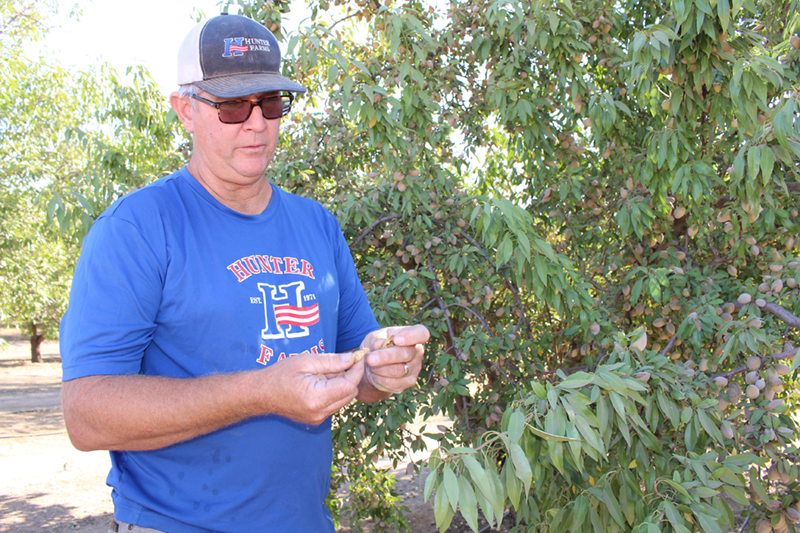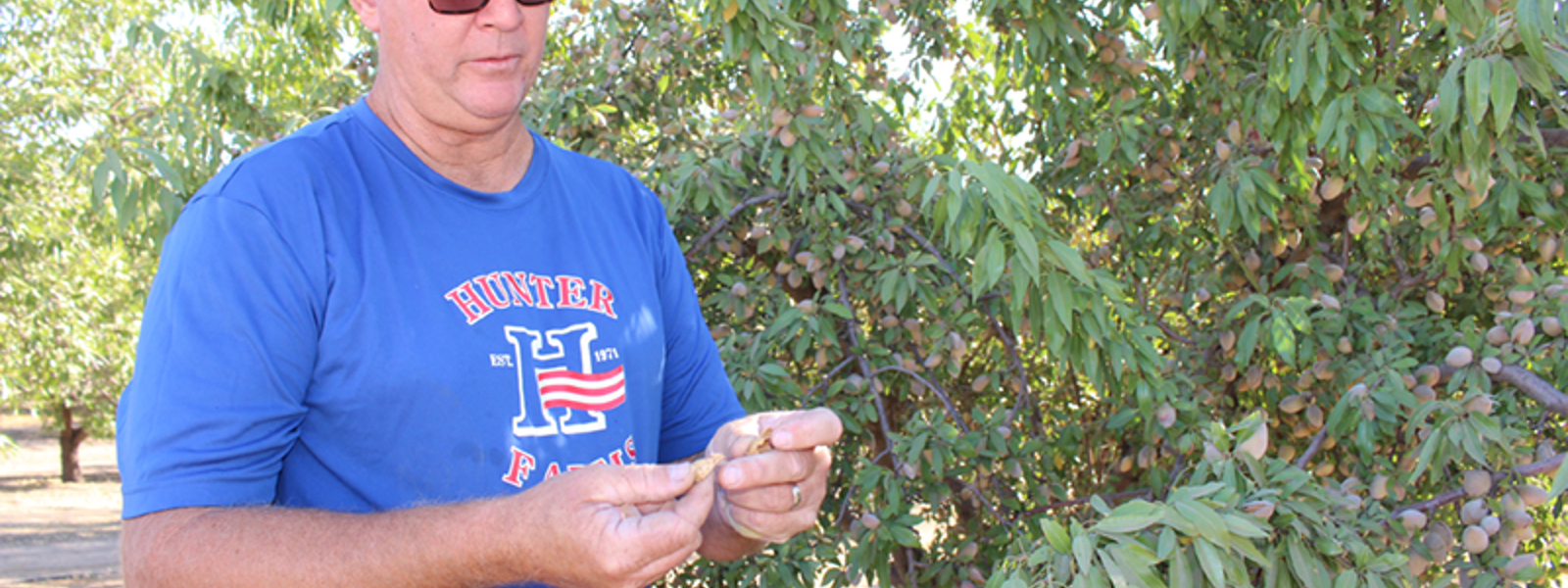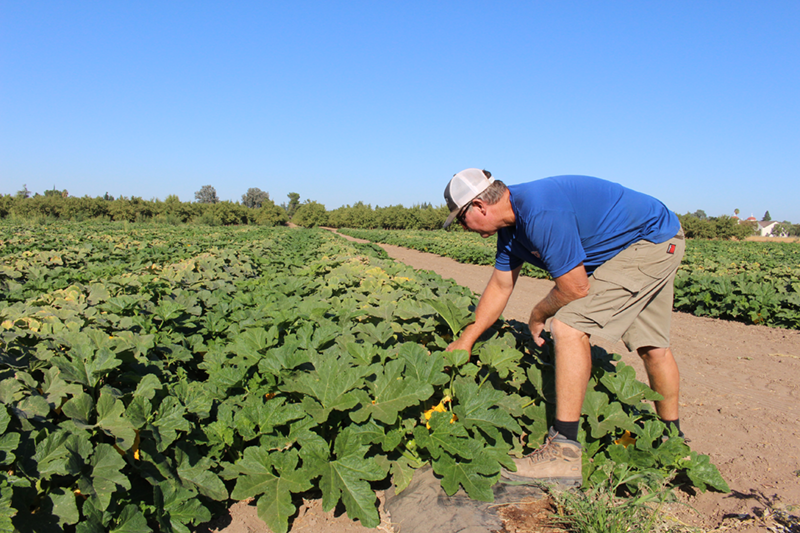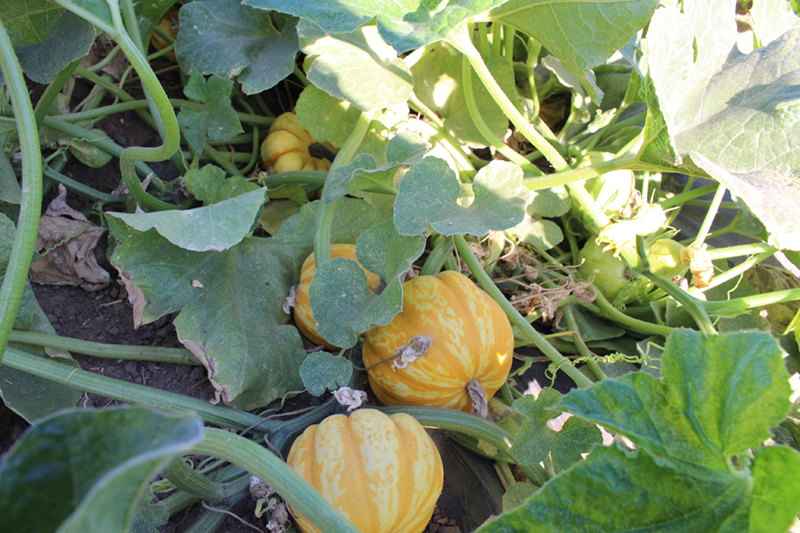Almond farmers diversify for bottom line

Merced County farmer Scott Hunter of Hunter Farms samples Monterey almonds prior to harvest last week. He and other farmers say high heat could mean the state’s 2024 crop may be lighter than the 2.8 billion-pound estimate released in July by the U.S Department of Agriculture.
Photo/Christine Souza


Photo/Christine Souza

Photo/Christine Souza
By Christine Souza
As almond harvest continues statewide, growers say they are focused on their bottom lines, looking for ways to diversify their crop portfolios and identify other income to shore up narrowing profit margins due to lower prices and higher costs.
“Cost controls are the biggest problem, so the price you get is absolutely a major factor,” said Merced County farmer Scott Hunter of Hunter Farms. “Even if I got $2 per pound for almonds, with the inflation rate, overhead, insurance and other costs that have skyrocketed, that wouldn’t solve the problem because I can’t keep up with inflation.”
Hunter farms with his parents and has three children interested in agriculture. He said, “Our farming legacy is a big deal for us.” This has meant diversifying beyond almonds to protect the farming operation.
His parents, who were among the first to plant almonds in the state in the 1970s, planted pistachios in recent years. In 2013, the family ventured into agritourism. Hunter now grows 70 varieties of pumpkins and gourds, and hosts visitors and schoolchildren at the farm’s pumpkin patch each October.
“We couldn’t continue to go down the same road, so we had to get our income from other places,” Hunter said, adding that he also invested in commercial real estate.
Fresno County farmer Matt Efird, who grows almonds, pistachios, walnuts, canning peaches and feed crops, said, “If a grower can have a diversified portfolio, that’s the way to go because you can hopefully cover the lows with income from other crops.”
Walnuts and feed crops are still recovering, but he said cannery peaches “were really good to us this year with increased contract pricing.” Efird said his pistachios, which replaced winegrapes due to expired contracts, will be bearing next year.
“It’s a downturn, and having diversity is hedging that bet. But when you have permanent crops, you’re stuck with what you got,” Efird said.
Prolonged periods of triple-digit temperatures in the past three months led to stress in some orchards, with affected growers reporting small kernel sizes, Efird said.
Crop reports from Blue Diamond Growers noted the average kernel weight for all almond varieties was down slightly from 2023. Harvest began in July and is expected to continue through late September.
The likelihood of a lighter crop may alter the 2.8 billion pound crop estimate announced in July by the U.S. Department of Agriculture. The estimate is 13% higher than last year’s crop of 2.47 billion pounds.
“The harvest is coming in now, and growers are seeing that the crop may not be as big as many thought. It’s that talk that’s driving up the price right now,” said Michael Easterbrook, managing director for Stratamarkets, an independent data company that tracks almond market prices. “Buyers need product, and they are chasing the market, so that is a good thing for sellers.”
How the size of this year’s crop will affect the market won’t be known until late this year or early next year, Easterbrook said. “We’re still very early into the crop year, but prices have been firming since the start of the crop year,” he added.
Impacted by supply-chain challenges that began in 2020, the state’s almond sector saw its carryover inventory increase to 608 million pounds in 2021, up from 359 million pounds in 2019, according to the Almond Board of California. In the past two years, carryover inventory exceeded 800 million pounds.
Clarice Turner, president and CEO of the almond board, said the supply of almonds is tight coming into 2024, especially as carryover inventory from last year is expected to drop to levels not seen in years.
“In this past crop year, we had 11 straight months of 200 million pounds-plus of almonds shipping from the state of California, which hasn’t happened before,” she said. “Demand definitely ticked up, so we expect that is going to make for a healthier market in the short term.”
Hunter said, “The almond price is better than it was, so there is a little more optimism; I think people are seeing some light at the end of the tunnel.”
In 2019, the average per pound almond price was $2.45. The price fell in subsequent years, with last year dropping to $1.40 per pound, according to USDA. In response, almond growers have removed orchards to bring supply and demand back into balance.
“For the health of the industry, I think people are starting to see that we can’t continue to plant 250,000 acres a year of almonds and that we’ve reached critical mass,” Hunter said. “If we want to have a healthy industry, it needs to maintain where we’re at and grow at a slower pace.”
The almond board continues to market and promote California almonds in 11 regions around the globe, Turner said.
“We’re developing innovation hubs in the U.S., Germany and India to really go after the science and create even more new products that contain almonds and take the ones we have, like almond flour, to the next level,” she added.
Almonds are California’s No. 5 crop, valued at $3.5 billion. The state produces about 80% of the world’s supply. Almond shipments in 2023 totaled 2.56 billion pounds, with 1.8 billion pounds remaining in the U.S. and 716 million pounds bound for export, according to the almond board.
Hunter said he is hopeful market demand for almonds can rebound.
“The fundamentals that make almonds good remain,” he said. “Consumers understand that consuming a handful of almonds each day is good for your heart.”
(Christine Souza is an assistant editor of Ag Alert. She may be contacted at csouza@cfbf.com.)




